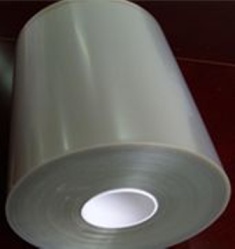 Cambrios Technologies Corporation announced that the company's ClearOhm silver nanowire coating material has been combined with Hitachi Chemical's photosensitive film technology to develop a variety of glass, polycarbonate and PET film transferable The baseboard's innovative high-transparent conductive film. Hitachi Chemical plans to begin production of the film later this year, and will strive to mass-produce it by the middle of 2012 to meet the growing demand for transparent conductive films for smart phones and tablet touch panels.
Cambrios Technologies Corporation announced that the company's ClearOhm silver nanowire coating material has been combined with Hitachi Chemical's photosensitive film technology to develop a variety of glass, polycarbonate and PET film transferable The baseboard's innovative high-transparent conductive film. Hitachi Chemical plans to begin production of the film later this year, and will strive to mass-produce it by the middle of 2012 to meet the growing demand for transparent conductive films for smart phones and tablet touch panels. The film is extremely flexible, has a variety of electrical conductivity, a surface resistance of 10-250 Ohm/sq, and an overall transmission rate (including the bottom plate) of 85-91%. High-resolution patterns can be made using simple exposure and rinsing processes, eliminating the need for costly processes such as resist, etching, and film removal. This type of film may be used to create extremely flexible invisible patterns for use in standard projected capacitive touch panels and emerging designs such as curved and 3D surfaces.
Cambrios CEO Michael R. Dr. Knapp said: Hitachi Chemicals has always been an ideal partner with keen market insight. For a long time, indium tin oxide has been the main transparent conductive film used in touch screen applications, but it requires an expensive and cumbersome sputter deposition process. Hitachi's films support an easy-to-use transfer process that is standard for other electronic materials such as photoresists. Cambrios ClearOhm materials are wet processed and Hitachi Chemicals has the potential to create an easy-to-use, highly innovative product for this market.
Cambrios ClearOhm materials offer simpler patterning and cheaper deposition options. In addition, due to its flexibility, this material can also increase production compared to ITO. Hitachi Chemical's transferable transparent conductive film is rolled out in a roll shape, making it suitable for roll-to-roll processing. The user can create a transparent electrode pattern using only a simplified photolithography process. Therefore, compared with ITO, manufacturers can better balance between conduction and resistance.
The product will also provide manufacturers with a greener, greener ITO thin film pattern process option, eliminating the costs and losses associated with the use of chemicals such as photoresists, etchants, and removers. Cambrios and Hitachi Chemical have found that in addition to smartphones and tablets, the product will also be promising in markets such as OLEDs (Organic Light Emitting Diodes), e-paper displays and photovoltaic devices.
Tengqiang Electronics Co.Ltd , http://www.xingdaele.com